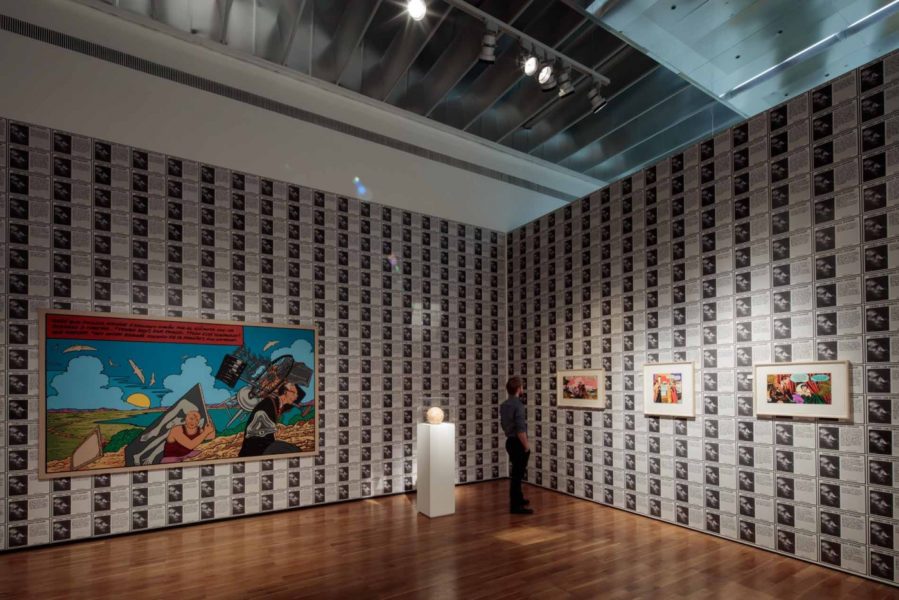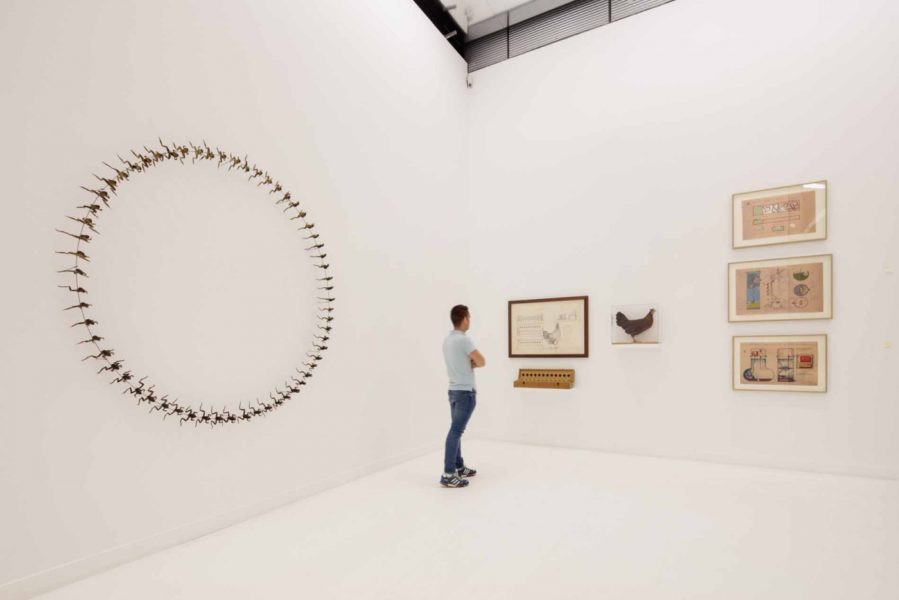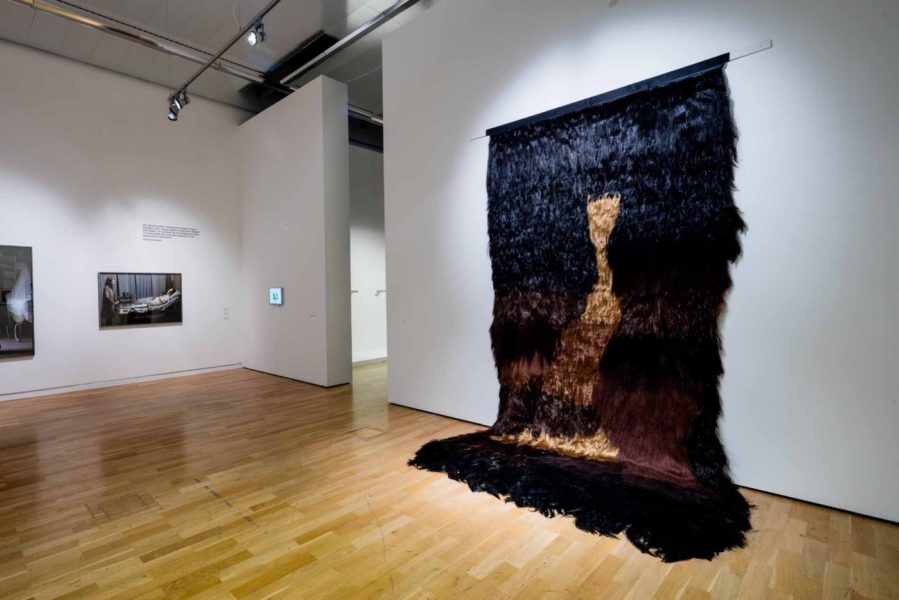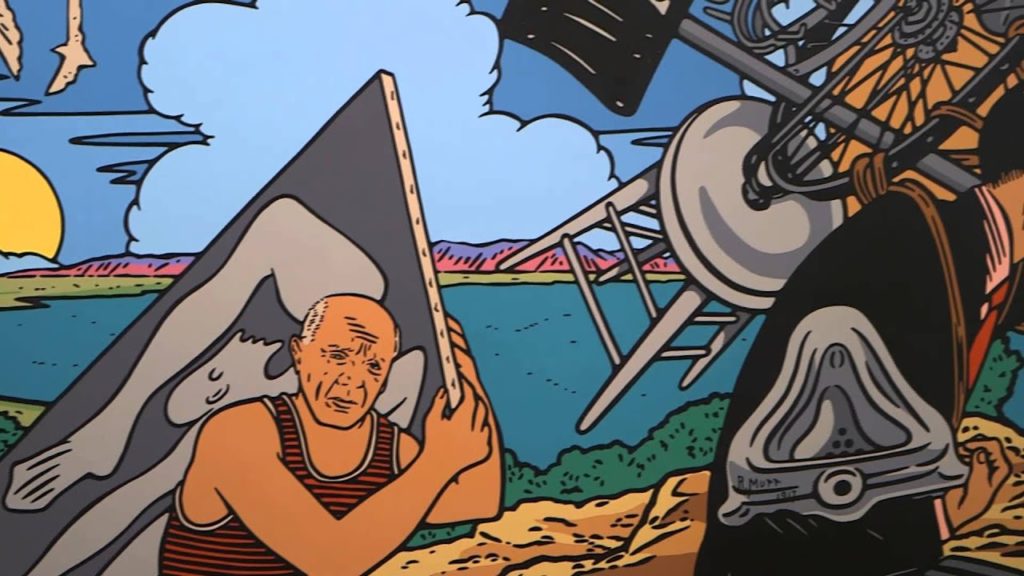Dark Mirror
Art from Latin America since 1968
Installationviews
Info
A skull with a clown nose. A soccer ball completely covered with nipples. Ants carrying flags and peace signs like activists. A Che Guevara made of soup beans, a Freud consisting of chocolate sauce.
“In Dark Mirror. Art from Latinamerica since 1968”, the Kunstmuseum Wolfsburg casts a wide-ranging and determined glance at contemporary art in Central and South America.
Encompassing 175 works from all genres, the exhibition draws on the rich holdings of the Daros Latinamerica Collection in Zurich—installations, objects, paintings, photographs, works on paper and videos. Visitors can experience works by 41 artists representing 10 countries from Argentina to Costa Rica and Cuba to Uruguay. The visually expressive pieces range from Vik Muniz’s “Clown Skull” to Miguel Angel Ríos’s video installation “A Morir”, a dance of life and death that focuses on human existence with all the pithiness of the young Jorge Luis Borges—“All it takes to die is to be alive.”
America, that is not only the United States but also Central and South America. “Dark Mirror” is concerned precisely with this second and no-less important part of the American (art) continent. One can no longer speak of an ‘innocence of ignorance’ in our globalized media and economy-oriented world of commodity flows and data streams, and yet from a European perspective Latin America is still largely overlooked. The Kunstmuseum Wolfsburg has therefore explicitly declared itself a site for the artistic analysis and creative scrutiny of this continent’s art, which often spiced with irony, witty wordplays and black humor with the “Dark Mirror” exhibition that draws on one of the world’s largest and most important collections of Latin American art.
The title “Dark Mirror” references Latin America’s past and present. It concerns taking a deep look into the mirror in order to visualize the serious game of self- and external perception. One example: in Europe, Coca-Cola, the drink of the GIs and the time of the post-war economic miracle, stands historically for freedom and consumption-oriented periods of booming growth. In Latin America the soft drink can also be seen socio-politically as the symbol of an economic domination by a foreign power, the overwhelming influence that the United States exerts on all aspects of everyday life. Antonio Caro’s enameled metal plaque bearing the name “Colombia” written in Coca-Cola’s unmistakable typeface in white letters on a red ground seemingly turns the country into an American brand.
“Dark Mirror” is concerned with an intense artistic experience but also with geopolitical tensions, violence in public and private, resistance and utopia in addition to the human body as an action field for psychosocial and societal conflicts.
Works from the Daros Latinamerica Collection
Mauricio Alejo – Álvaro Barrios – Luis Fernando Benedit – Eduardo Berliner – Luis Camnitzer – María Fernanda Cardoso – Antonio Caro – Donna Conlon – Nicola Costantino – Mario Cravo Neto – Antonio Dias – Gonzalo Díaz – Juan Manuel Echavarría – Iván Edeza – Paz Errázuriz – León Ferrari – René Francisco – Víctor Grippo – Alfredo Jaar – Charles Juhász-Alvarado – Guillermo Kuitca – Nelson Leirner – Marcos López – Jorge Macchi – Ana Mendieta – Priscilla Monge – Vik Muniz – Oscar Muñoz – Nadín Ospina – Fernando Pareja & Leidy Chavez – Manuel Piña – Liliana Porter – José Alejandro Restrepo – Miguel Angel Ríos – Miguel Ángel Rojas – Betsabeé Romero – Rosemberg Sandoval – Teresa Serrano – Melanie Smith – Liliana Vélez Jaramillo – Horacio Zabala






